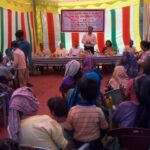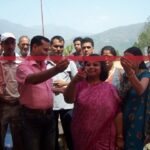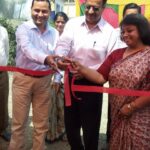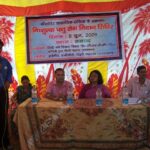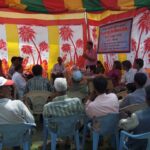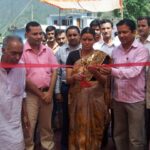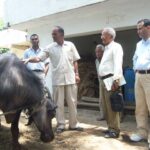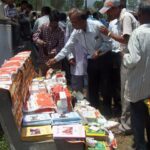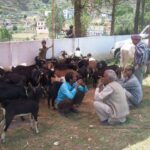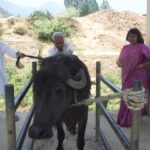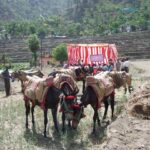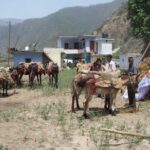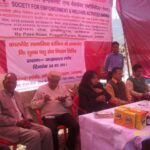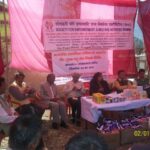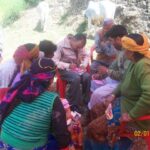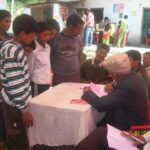ANIMAL HEALTH DIAGNOSIS PROGRAMS
ANIMAL HEALTH DIAGNOSIS PROGRAMS IN TEHRI DAM AFFECTED VILLAGES OF DISTRICT TEHRI GARHWAL OF UTTARAKHAND
INTRODUCTION AND BACKGROUND OF THE PROJECT
Livestock is an integral part of human life, with animals such as cows, buffalos, goats, and poultry playing a significant role in the lives of rural people. In India, particularly in hilly states, agriculture, animal husbandry, and related activities are essential for the livelihood of more than 75% of the population. Milk production and sale have been an ancient occupation established in the rural setting of the country, with a long history of converting highly perishable milk into stable and long-lasting milk products for high income. India has become one of the leading milk-producing countries in the world, and there is a need to educate people on the avenues through which they can earn more profit by converting perishable milk into long-shelf-life products. Cattle are an integral part of the Indian way of life, and dairying has been one of the primary occupations and sources of income. Animal husbandry has contributed significantly to the national economy, with commercial ventures in dairy production, poultry production, and meat production becoming increasingly possible in rural areas. However, availability of trained personnel with technical know-how to attend to veterinary emergencies is scarce in some regions, and it is essential to maintain livestock in a scientific way to enhance their contribution to the economy. Due to lack of healthcare facilities, feed and fodder, disease control and prevention measures, and geographical conditions, people cannot access government facilities, particularly in areas affected by the Tehri Dam. As a result, HIFEED organized veterinary health camps in animal husbandry-prone areas under the Corporate Social Responsibility of THDC, which have received enthusiastic participation from people of different castes and creeds.
AIMS AND OBJECTIVES OF THE PROJECT
1. Facilitate farmers with essential insights and resources concerning comprehensive veterinary care for their livestock.
2. Conduct informative sessions encompassing crucial aspects such as health, nutrition, breeding, feeding, management, and insurance across diverse livestock species.
3. Educate farmers about strategic measures to effectively mitigate and prevent major livestock diseases, fostering a proactive approach to animal health.
4. Improve livestock health by implementing proactive measures, including preventive inoculations that act as a robust shield against potential diseases.
5. Offer invaluable veterinary health check-ups without charge, thereby ensuring the optimal well-being of the livestock under the care of farmers.
6. Dispense complimentary veterinary medicines to bolster livestock health, leading to enhanced productivity and economic gains for farmers.
COMPONENTS AND ACTIVITIES OF THE PROJECT
1. Respond to the distinct animal husbandry requirements prevalent within the geographical vicinity of the Tehri Dam reservoir.
2. Conduct comprehensive surveys to systematically gather data concerning regions susceptible to multifaceted challenges and concerns.
3. Identify and delineate specific areas characterized by a deficiency in awareness, thereby necessitating precisely targeted interventions.
4. Initiate a proactive approach of door-to-door interactions aimed at effectively disseminating essential knowledge among villagers, elucidating best practices in livestock management.
5. Effectively orchestrate diagnostic camps dedicated to animal health, strategically spanning diverse locations to ensure an encompassing reach.
6. Engage the expertise of adept veterinary practitioners and seasoned livestock extension officers, thereby capitalizing on their wealth of knowledge.
7. Avail the valuable support and collaboration of experts affiliated with the esteemed Department of Animal Husbandry.
8. Improve and elevate the quality of farmers’ livelihoods, thereby making substantial contributions to rural development by empowering them with augmented proficiency in livestock management, achieved through these meticulously planned and executed initiatives.
TARGET AREA OF THE PROJECT
The project’s designated area of focus encompasses the villages affected by the Tehri Dam in the Tehri Garhwal district of Uttarakhand. These villages have experienced the consequences of the Tehri Dam’s construction, which has led to the displacement of local communities and the disruption of their traditional livelihoods, notably in the realm of animal husbandry.
Detail of the camps is as below:
Camp Venue Date Camp Venue Date
1. Nandgaon Barkot 05.06.2009 7. Sem Mukhem 27.11.2010
2. Pilkhi 06.06.2009 8. Onalgoan 28.11.2010
3. Kamand 08.06.2009 9. Sendul Silyara 29.11.2010
4. Madan Negi 04.09.2009 10. Nageshwar Saur (Semdhar) 23.03.2011
5. Motana 05.09.2009 11. Jakhwalgoan 24.03.2011
6. Kandisaur 07.09.2009 12. Maisari (Kamand) 26.03.2011
TARGET GROUPS AND BENEFICIARIES OF THE PROJECT
The project’s beneficiaries encompass all the families engaged in cattle rearing within the villages affected by the Tehri Dam in the Tehri Garhwal district. The project’s core objective is to extend support to these families by granting them access to a diverse array of resources and services related to animal husbandry.
FUNDING PARTNER OF THE PROJECT
The funding for the project was provided by THDC India Ltd. (A Government of India Enterprise), Bhagirathipuram, Tehri Garhwal, Uttarakhand.
SANCTIONED BUDGET OF THE PROJECT
The project received funding from THDC with the following details:
Financial Year Sanction Order/Work Order/
Agreement No. Date of Sanction Order/Work Order/Agreement Sanctioned Budget of the Project
(Amount in Rs.)
2009-10 THDC/P&A/Tehri/ 2009/382 29.05.2009 1,86,000.00
2010-11 THDC/SEWA/Rishi/ 263 19.11.2010 2,58,000.00
Total 4,44,000.00
OUTCOMES AND ACHIEVEMENTS OF THE PROJECT
The successful execution of the animal health diagnosis programs has led to the achievement of the following outcomes:
1. Farmers have gained access to fundamental information encompassing various facets of animal husbandry, thus enhancing their comprehension and awareness of effective livestock management practices.
2. Educational efforts have been directed towards farmers to enlighten them about the prevention and control of pivotal livestock diseases, yielding a noticeable reduction in the prevalence of such diseases within the region.
3. The proactive administration of preventive inoculations and other relevant measures to veterinary animals has significantly bolstered their health, subsequently resulting in heightened productivity.
4. Accessible and complimentary veterinary health check-up facilities extended to farmers have facilitated early identification and treatment of potential diseases in their animals.
5. The project has demonstrated its commitment through a combination of approaches, including door-to-door interactions, organized animal health diagnosis camps, and the enlistment of experienced veterinary doctors and knowledgeable livestock extension officers, all contributing to equipping farmers with vital resources and insights.


